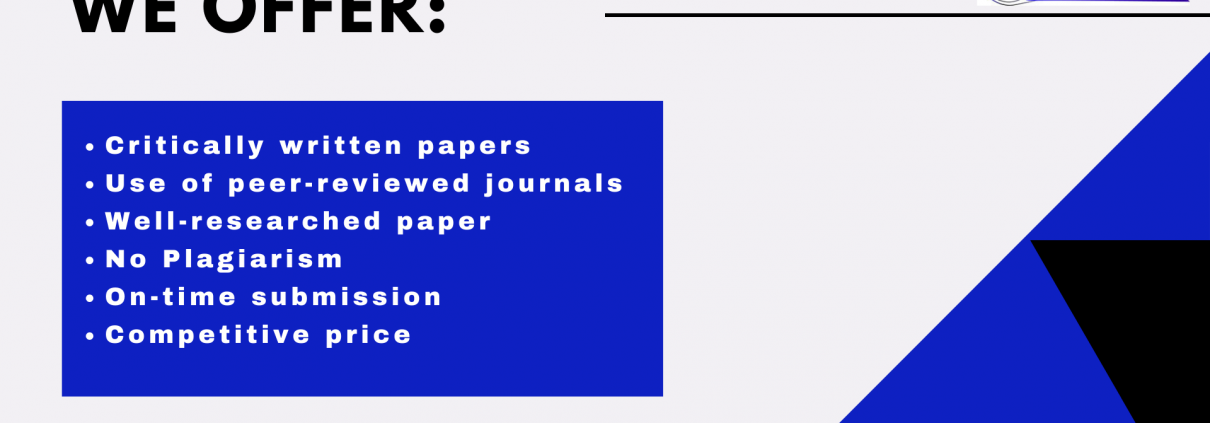Executive Summary
The study, in this case, tends to highlight the different advantages and limitations that are associated with that the chosen methodological framework with respect to the project. Moreover, the study also discusses the kinds of issues that can be resolved with the help of the mentioned project management methodological framework. On the other hand, the study also discusses the kinds of factors that need to be considered while trying to implement the framework.
1. Introduction
Project Management can be marked as an imperative element, as it tends to have the ability to ensure that the requirements of a project have been met, and can also deliver value against business opportunities. This study focuses on the factor of Agile Methodology, in the context of the project of educational development in the context of the University of Bedfordshire.
Project Brief
The project in this case tends to improve the institutional student service and establish a scholarly library for the University of Bedfordshire. The overall project in this context, can effectively help in terms of increasing the educational development of the student and internal professors.
Background of Methodology
Agile methodology can be marked as a type of project management process, within which demands and solutions tend to evolve with respect to the collaborative efforts of self-organising as well as cross-functional teams. As per the view of Hidalgo (2019), an agile methodological framework is basically an iterative approach to project management, through which the overall process of delivering value can become smooth. The concept of agile project management is used in the context of projects, within which the respective requirements have not been highlighted or properly identified. One of the key reasons that the agile project management methodology is being used is because it can help in delivering value in an effective manner. The study in this case, tends to discuss the respective advantages and limitations of the agile methodology, with respect to the project objectives and other attributes.
2. Discussion
2.1 Benefits of the Method within the Project
The key benefits of the agile methodology include flexibility and evolutionary nature which is crucial for the success of project management. As per Betta and Boronina (2018), agile project management is referred to as an interactive and incremental approach for the assessment of different concepts such as flexibility, transparency, quality and improvement. The benefits can be analysed from the ways in which agile focuses on delivering the quality, value of the consumers and complications of the project by considering the challenges and issues. Superior quality products are one of the integral benefits that can be obtained from the application of agile project management. The quality of the product helps the clients in being involved in the development process by considering the realities of the market. Consumer satisfaction in terms of the benefits of the method within the project consists of the decision-making process. According to Peake et al. (2018), delivering value to the consumers by considering the feedback to make effective changes is beneficial for the project. Agile project management provides better control over the project in regards to the University of Bedfordshire by providing an appropriate amount of transparency. Advanced reporting tools and techniques are essential for the implantation of an integrated project. Improving the predictability of the university library project are some of the advantages that can be associated with agile project management. Increasing visibility, identification of the risks as well a s formulation of mitigation strategies and plans are some of the attributes that can be determined from the agile framework. As stated by Picciotto (2020), the performance criteria of the project can be easily assessed by the manager by conjecturing the features of agile project management. The improvement in terms of the performance will create a scope to mitigate any uncertain or unwanted risk by pre-determining the challenges and issues.
The flexibility of the university library project for the University of Bedfordshire can be built by considering the feedback and managing the cost of the project. The accountability of the team provides the opportunity of implementing some significant amount of change by providing dynamics to the project. As mentioned by Khalil and Khalil (2020), continuous improvement is one of the principles of agile management. Continuous improvement also consists of the exchange of ideas in retrospect to the culture and collaboration among the team members by sharing knowledge and experience. Improvement of the team morale includes the organisation and management of the team by increasing autonomy and authority over various decisions. As per the view of Tam et al. (2020), developing and learning provides the opportunity to discuss the challenges and status of the project are some of the crucial factors of agile methodologies. Agile object management also helps in building the environment by flexible and well-defined team structure. The relevant metric that can be defined for the estimation of the costs and time are of effective nature that is present in the area of agile project management. The difference between traditional methodologies and agile methodologies is based on the production of the results and optimisation of the performance. The data-driven decisions that can be identified in the agile framework are appropriate and accurate in terms of improving the quality and diminishing the chances of excessive cost. The benefits of agile project management will be effective in the context of tools and techniques that are associated with it are taken into consideration for establishing and maintaining the project in regards to the university library project.
2.2 Limitations of the method or any anticipated issues
The limitations of agile project management help in the development of effective and efficient strategies and plans to mitigate uncertain and unreasoning factors in retrospect to the project. The aim of agile project management includes the delivery of products by assessment of small increments. As per Badham et al. (2019), the identification of the limitations and challenges is crucial for making an effective and appropriate change in order to achieve the optimum level of results by adhering to the aims of the project. The disadvantages that can be associated with the project in regards to the University of Bedfordshire includes poor resource planning, limited documentation, fragmented output, no finite end and difficult measurement. The team is unaware of the end results as well as the delivery cycle associated with the project. The challenges include the prediction of the costs and time frame which are some of the crucial aspects of resource planning. As opinionated by Nachbagauer (2021), the complexity of agile project management will be more in retrospect to the size of the project. documentation of the project conjectures attributes of time management although the disadvantage that can be associated with agile project management is the presence of limited documentation. The less detailed factors are present in the limited documentation of the project. Fragmented output in terms of agile project management consists of the delivery of incremental products thereby helping the products to reach the market at a much faster rate. The different functioning of the team provides output due to the component of different cycles therefore a lack in the cohesive unit is present for agile project management.
The presence of no finite end might be easier to access in the beginning of the planning with respect to agile project management. There are some severe disadvantages that are associated with the attributes of manual planning such as side-tracked delivery along with the presence of unexpected functionality. According to Lill et al. (2021), the attributes of no finite end in agile project management will impact the vision of the project thereby influencing the components of the results of the project. The different measurements that can be identified in the delivery of the agile methodologies might hamper the key performance indicators. The change in the key performance indicators will hamper the growth and development of the project in a holistic manner. The measuring process is time-consuming in nature thereby making it more difficult to measure the appropriate and accurate results.
3. Conclusion
Summary of Benefits and Limitations
The study summarizes that one of the key advantages that can be gained through the implementation of the agile methodology is related to the fact that the value of the projects tends to be unremitting. Moreover, it can also be summarized in this case that another benefit that is being provided by the process of agile methodology is that, it can increase the level of stakeholder interest, can be increased to a large extent, as it tends to highlight all the key features of a project, and hence the chances of meeting stakeholder expectations can get enhanced. As per the opinion of Venkatesh et al. (2020), agile methodology can effectively help in terms of interacting between the respective stakeholders and the business developers. Hence, the methodology tends to have the ability to provide the opportunity of figuring out stakeholder interests.
However, it can also be summarised in this case that one of the key limitations of the agile methodological framework, is related to the fact that the level of documentation tends to be on the lower side. Moreover, it can be summarised that the requirements in the case of agile methodology is quite difficult to be figured out and hence the chances of predicting expected results can decrease to a large extent. On the other hand, it can also be summarized in the context of this study that, in the case of complex projects, through the implementation of an agile project management framework, it is quite difficult to estimate requirements and efforts, which certainly is another limitation.
Justification of the chosen methodology
It is quite evident that due to the factor of rapid technological progression, a number of business organisations are tending to assess traditional methods of project management in terms of staying competitive, and this can be marked as one of the key reasons due to which it has become imperative to implement the agile project management framework. On the other hand, in the context of any project, it is imperative to have a proper level of transparency, which can easily be achieved by combining Agile and project management. Similarly, as per the opinion of Sońta-Drączkowska and Mrożewski (2020), the key theme of agile project management tends to revolve with respect to the changes, and the development process. Moreover, the factor of agile methodology also has the ability to focus on the process of delivering the features of the respective projects, which can be marked as one of the key reasons due to which it is imperative to implement the agile project management in the context of this project. Apart from all these, as per the view of Thesing et al. (2021), with the help of the agile project management related software tools and techniques, the process of balancing the cost of project scope, quality, personnel and adapting to the changes can get easier to a large extent. On the other hand, agile project management can also be marked as a collaborative approach, within which the project roles and responsibilities are being divided among Product Owner, Scrum Master and Team members. These can be marked as the key reasons, due to which the concept of agile project management framework has been chosen with respect to the project of the University of Bedfordshire.
4. Recommendations
The key recommendation that can be associated with the attributes of agile project management in regards to the university liberty project are as follows:
The identified limitations can be managed by formulating relevant procedures and policies in respect to the agile project management. The poor resource planning can be overcome by considering the perspectives of the consumers and the members that are associated with the project. As per the view of Hussain et al. (2018), the diminishing of the poor planning will be beneficial for the project as it will also impact the cost and time frame of the project. The limited documentation and poor planning in the project management are independent factors that are present in the planning of the agile methodologies. The fragmented output needs to be adjusted according to the requirements and demand of the project thereby also helps in the analysis of the improvements of the team and the individual. The no finite end in terms of the agile project management needs to be altered for deriving the benefit of flexibility and quality of the services. The difficult measurement of agile project management can be built through the customisation of the processes and solutions in regards to the management of various tests that are associated with the university library project.
Focusing on the people over the processes and mindset is one of the most important aspects which needs to be accessed while addressing the factor of agile project management. The testing cycle for this process includes the contribution of team members as well as thereby identification of people with the right mindset is important. Proactive members with appropriate communication skills along with the decision-making attribute needs to be considered for the benefit of the project. Mitigating the issue of limiting documentation by integrating testing by the development of life cycle the integrated testing consists of the testing in terms of the quality of the software thereby helping in the core developments. The identification of the risk and challenges of the project can also be determined at the earlier stage by appropriate analysis and evaluation of the required document. Establishing self-organising teams conjectures the allocation of the tasks along with the ownership of the projects. As mentioned by Dzebo (2019), the improvement in terms of performance and quality of the project can be obtained by adhering to effective mitigation objectives. The university library project will redefine success by incorporating the attributes of agile project management such as the delivery of workable and transformable approaches. The approach provides the team with the dynamics through which changes can be obtained for the success of the project.
On the other hand, in this case, it is imperative for the respective project managers or the other management related officials to encourage the team members in terms of communicating properly with each other. As per the view of Sithambaram et al. (2021), proper communication, as well as collaboration among the respective team members, are important, in terms of completing a project in an effective manner, particularly in the case of agile and distributed projects. This in return can effectively help in terms of adapting to the required changes as well as can also offer flexibility to the team members, in terms of maintaining desired project speed. In other words, it can be stated that it is quite essential in this case to provide a proper infrastructure for the purpose of effective communication as well as deploying tools in terms of enhancing the efficiency level of the respective team members.
Apart from all these, it is equally important in this case to consider documentation as an imperative factor. As per the opinion of Goffin et al. (2019), with the help of effective documentation processes the chances of effectively managing quality issues can increase to a large extent. Moreover, in the context of agile project management related techniques, it is imperative to provide with a proper guideline and information related to requirements on the level of documentation. This in return can effectively increase the chances of achieving the respective project related objectives, which certainly is a key benefit in this case.
References
Betta, J. and Boronina, L., (2018). Transparency in Project Management–from Traditional to Agile. Advances in Economics, Business and Management Research, 56, pp.446-449.
Goffin, K., Åhlström, P., Bianchi, M. and Richtnér, A., (2019). Perspective: State‐of‐the‐art: The quality of case study research in innovation management. Journal of Product Innovation Management, 36(5), pp.586-615.
Hidalgo, E.S., (2019). Adapting the scrum framework for agile project management in science: case study of a distributed research initiative. Heliyon, 5(3), p.e01447.
Hussain, S., Fangwei, Z., Siddiqi, A.F., Ali, Z. and Shabbir, M.S., (2018). Structural equation model for evaluating factors affecting quality of social infrastructure projects. Sustainability, 10(5), p.1415.
Khalil, C. and Khalil, S., (2020). Exploring knowledge management in agile software development organizations. International Entrepreneurship and Management Journal, 16(2), pp.555-569.
Nachbagauer, A., (2021). Managing complexity in projects: Extending the Cynefin framework. Project Leadership and Society, p.100017.
Picciotto, R., (2020). Towards a ‘New Project Management’movement? An international development perspective. International Journal of Project Management, 38(8), pp.474-485.
Sithambaram, J., Nasir, M.H.N.B.M. and Ahmad, R., (2021). Issues and challenges impacting the successful management of agile-hybrid projects: A grounded theory approach. International Journal of Project Management.
Sońta-Drączkowska, E. and Mrożewski, M., (2020). Exploring the role of project management in product development of new technology-based firms. Project Management Journal, 51(3), pp.294-311.
Thesing, T., Feldmann, C. and Burchardt, M., (2021). Agile versus Waterfall Project Management: Decision Model for Selecting the Appropriate Approach to a Project. Procedia Computer Science, 181, pp.746-756.
Venkatesh, V., Thong, J.Y., Chan, F.K., Hoehle, H. and Spohrer, K., (2020). How agile software development methods reduce work exhaustion: Insights on role perceptions and organizational skills. Information Systems Journal, 30(4), pp.733-761.
Bibliography
Hamad, R.M.H. and Al Fayoumi, M., (2018), November. Scalable agile transformation process (SATP) to convert waterfall project management office into Agile project management office. In 2018 International Arab Conference on Information Technology (ACIT) (pp. 1-8). IEEE.
Magwali, S.N., (2018). Application of project management software and its influence on project success: a case of NPOs in the Western Cape (Doctoral dissertation, Cape Peninsula University of Technology).
Silva, D.S., Ghezzi, A., de Aguiar, R.B., Cortimiglia, M.N. and ten Caten, C.S., (2020). Lean Startup, agile methodologies and customer development for business model innovation: A systematic review and research agenda. International Journal of Entrepreneurial Behavior & Research.
Venkatesh, V., Thong, J.Y., Chan, F.K., Hoehle, H. and Spohrer, K., (2020). How agile software development methods reduce work exhaustion: Insights on role perceptions and organizational skills. Information Systems Journal, 30(4), pp.733-761.











